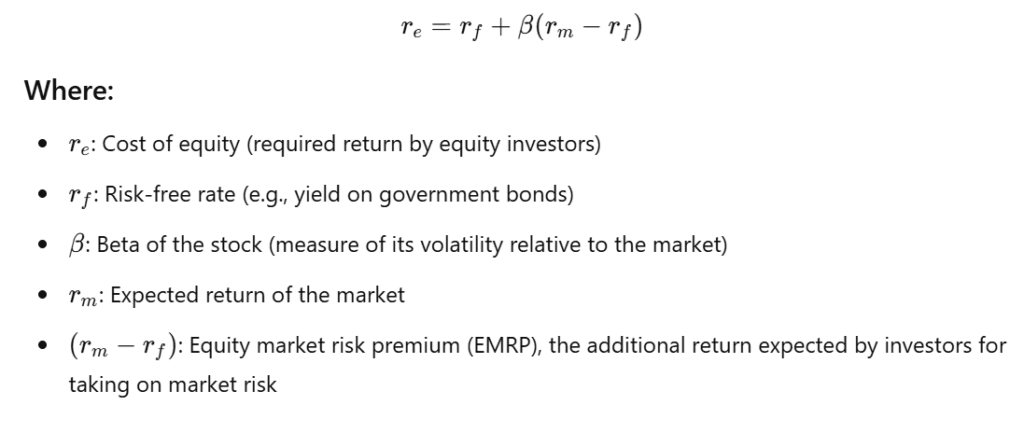The cost of capital is the minimum return a company must earn on its investments to satisfy its investors and maintain its market value.
Table of Contents
Cost of Capital is the minimum required return that investors expect for providing capital to the business, whether through equity, debt, or a combination of both.
The cost of capital includes the cost of both equity and debt, weighted based on the company’s preferred or current capital structure. This is referred to as the weighted average cost of capital (WACC).
A company’s investment decision on a new project should be based on the cost of capital, as the new project must generate a higher return than the cost of capital so that the company can survive in the long run.
Understanding Cost of Capital
The cost of capital is a key component when it comes to determine a project hurdle’s rate. It reflects the expectations of investors and lenders who provide the capital, serving as a benchmark for decision-making.
A company’s cost of capital majorly has two components. Cost of Debt and Cost of Equity, or a mixture of both, which is called the weighted average cost of capital (WACC).
An investor may consider the volatility (beta) of a company’s financial results to determine whether a stock’s price is justified by its potential return.
The Cost of Debt
The cost of debt is merely the interest rate paid by the company on its debt. However, since interest expense is tax-deductible, the debt is calculated on an after-tax basis as follows:

where:
Interest expense=Int. paid on the firm’s current debt
T = The company’s marginal tax rate
The Cost of Equity
Cost of Equity is slightly complex because the rate of return demanded by equity investors is less well defined than it is by lenders.
The capital asset pricing model(CAPM) approximates the cost of equity as follows.

Beta is used in CAPM model that represents the volatility of a particular stock. Beta for a public company can be calculated usign linear regression or covariance and for private company industry average can be used.
Cost of Debt + Cost of Equity = Overall Cost of Capital
The firm’s overall cost of capital is based on the weighted average of these costs.
For example, consider an enterprise with a capital structure consisting of 60% equity and 40% debt; its cost of equity is 10% and the after-tax cost of debt is 7%.
Cost of Capital = (0.6*10%) + (0.4*7%) = 8.8%
This is the cost of capital used to discount future cash flows from potential projects and other opportunities in order to determine their net present value (NPV) and ability to generate value.
Why Cost of Capital Is Important?
The primary aim of any business is to grow and expand. As the expansion happens, the company needs cash or securities to take on projects; hence, know the cost of borrowing funds will help in making an informed decision about whether to take on a new project or not based on how much return the new project can generate.
Key Takeaways
Related Readings

